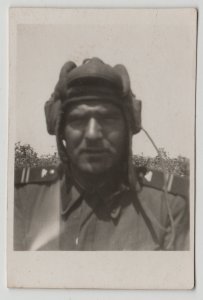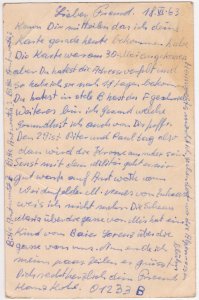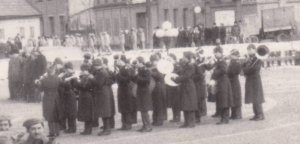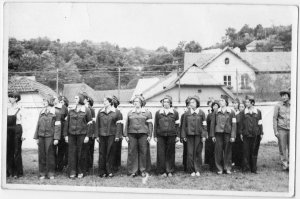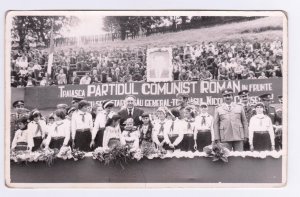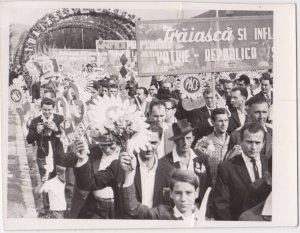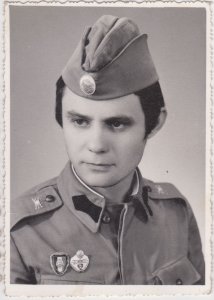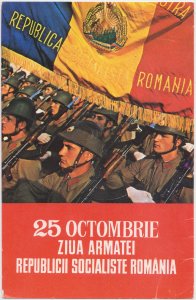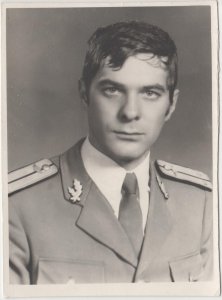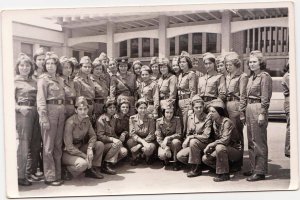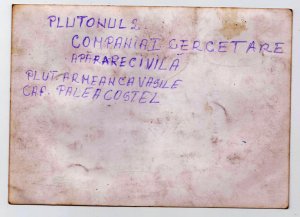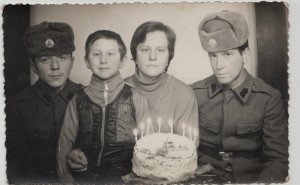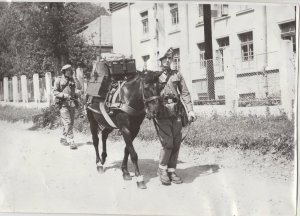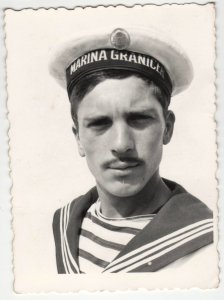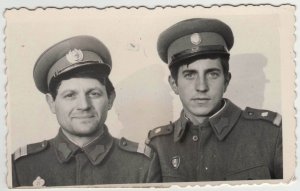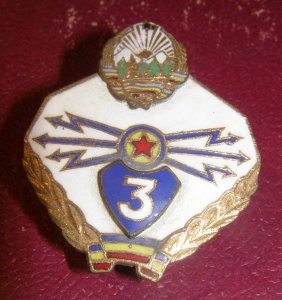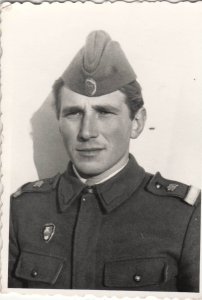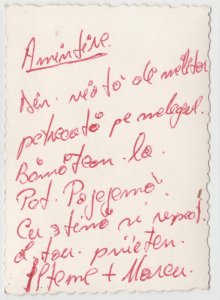- Joined
- Apr 14, 2019
- Messages
- 7,397
- Points
- 284
A view of some of the Romanian Communist military pictures in my collection.
First a little history in 1944 the Romanian's went over to the Soviet side and were under Soviet occupation
well into the mid-1950's, this ultimately had a big influence on the uniforms and equipment of the military.
The first period is known as the RPR - Republica Populară Română circa 1947-mid 64, then came the RSR - Republica Socialistă România.
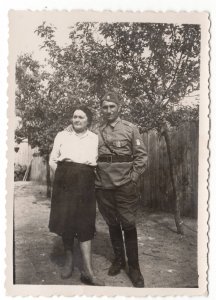
The first picture shows a member of the TVD with his wife or girlfriend, I believe it was taken during the war.
The Tudor Vladimirescu Division (full name: Romanian 1st Volunteer Infantry Division 'Tudor Vladimirescu - Debrecen') was a Soviet-organized division of Romanians that fought against Germany and Hungary during the final year of World War II.
Named after Tudor Vladimirescu, the leader of the Wallachian uprising of 1821, the division was formed from Romanian prisoners of war in October 1943, under the command of Brigadier General Nicolae Cambrea. Although termed 'volunteers', the bulk of the men likely volunteered in order to escape a desperate existence in Soviet POW camps. The Tudor Vladimirescu Division was organized and equipped like a Soviet rifle (infantry) division.
The division marched into Bucharest on August 29, 1944, ostensibly as liberators, but the city had in fact already been liberated by units of the Romanian Army when Romania left the Axis Powers and attacked German troops stationed in the country. The division, still under Soviet control, saw real combat during the final months of the war in Transylvania, Hungary, and Czechoslovakia, playing a key role in the Soviet seizure of Debrecen, Hungary, in October 1944. Combat losses were heavy; by March 1945 the strength of the division had sunk to 4,436 men.
In March 1945 the division was pulled out of the front lines, but remained under the operational control of the 2nd Ukrainian Front until August 15, 1945.
Relentlessly politicised by their communist leaders, the Tudor Vladimirescu Division became a politically reliable military formation of the Romanian communists. Along with another Romanian communist unit, the Horia, Cloşca şi Crişan Division, and backed by tens of thousands of Red Army troops, the Tudor Vladimirescu Division played a key role in imposing communist rule in Romania after the war. The two communist divisions were integrated into the Romanian Army on August 22, 1945. The Tudor Vladimirescu Division was converted into an armored division by 1947 while the regular Romanian army was reduced to four divisions with no tanks, thus providing the Romanian communists the trump cards of mobility and firepower had a conflict with anti-communist elements in the Romanian Army taken place.
The Division was converted into the 1st Armored Division in 1947, then 5 Tank Corps, after 47 Tank Corps, and finally take the name of 37 Mechanised Division, which became in 1957 a Mechanised Division.
In the 1950s Soviet officers were employed as advisers. Order sub-units (battalions, companies) was matched by political officers. After 1956-1957 the youth division officers were assigned to three years in military school or other schools in Sibiu.
The next group of pictures, many with the same soldier in them clearly shows the Soviet influence with regards uniforms.



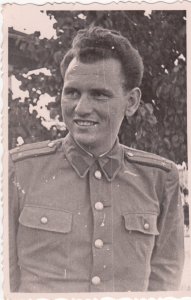

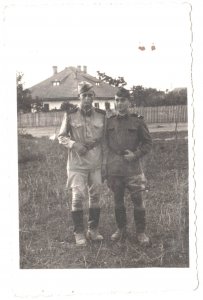
The beret wearing troops are members of the "Mountain Hunters" locally called Vanatori de Munte, or VM's for short, they are Mountain troops along with the large floppy beret are also their traditional white socks and mountain boots, although as can be seen in the pictures they also sported the long leather boots as well.

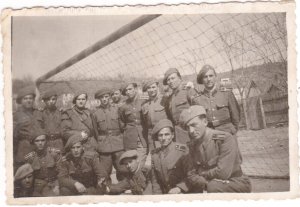



Family Portrait, at first I thought a Soviet soldier, stationed in Romania, due to the Red Star hammer and sickle insignia in the side-cap, but , closer examination of the insignia on the right chest revels he is in fact a Romanian soldier in the very early R.P.R. period.

Young Military Officer Cadet, the Metal `E`on the shoulder boards probably indicates his status as ´elev` or pupil grade. the dark buttons carry a 5 pointed star with letters R.P.R. in a circle.
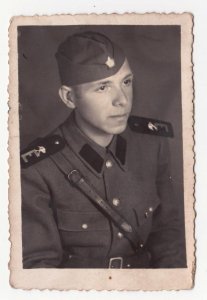
Young Military Officer Cadet dated to 1951
Possibly at Alba-Iulia Military Officer School.
Metal `E`on the shoulder boards probably indicates his status as ´elev` or pupil grade.
Insignia on the Epaulettes - pick, shovel flaming grenade = indicates he belongs to a Pioneer or `Geniu` (military Engineers) unit.
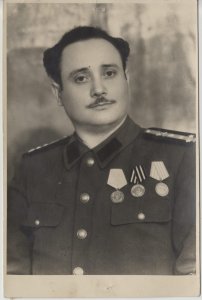
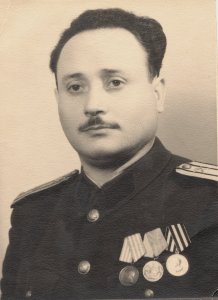
Two images of the same man wearing the same medals but in different order.
Second picture the order is correct - left to right :-
"Liberation from the Fascist Yoke Medal - Medalia "Eliberarea de sub jugul fascist"
Established in 1949 under the RPR era.
RPR Medal of Labor, - "Medalia Muncii," (established in 1949) Interestingly this is the very first version with a large ribbon ring.
USSR/Soviet Union - Medal of Victory over Germany in the Great Patriotic War 1941-45 Medal.
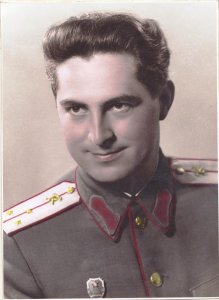
Shoulder board insignia indicates he is with a Transport Mechanic's Unit.
Officer Academy badge on his right breast, brass buttons with a 5 pointed star with the initial's "RPR"

Romania RPR Communist Period written to the rear - 10. 11. 1952 ora 11:45 "George" a rare color picture from that period, Airforce possibly a Radio Communication / Transmission Unit.
First a little history in 1944 the Romanian's went over to the Soviet side and were under Soviet occupation
well into the mid-1950's, this ultimately had a big influence on the uniforms and equipment of the military.
The first period is known as the RPR - Republica Populară Română circa 1947-mid 64, then came the RSR - Republica Socialistă România.

The first picture shows a member of the TVD with his wife or girlfriend, I believe it was taken during the war.
The Tudor Vladimirescu Division (full name: Romanian 1st Volunteer Infantry Division 'Tudor Vladimirescu - Debrecen') was a Soviet-organized division of Romanians that fought against Germany and Hungary during the final year of World War II.
Named after Tudor Vladimirescu, the leader of the Wallachian uprising of 1821, the division was formed from Romanian prisoners of war in October 1943, under the command of Brigadier General Nicolae Cambrea. Although termed 'volunteers', the bulk of the men likely volunteered in order to escape a desperate existence in Soviet POW camps. The Tudor Vladimirescu Division was organized and equipped like a Soviet rifle (infantry) division.
The division marched into Bucharest on August 29, 1944, ostensibly as liberators, but the city had in fact already been liberated by units of the Romanian Army when Romania left the Axis Powers and attacked German troops stationed in the country. The division, still under Soviet control, saw real combat during the final months of the war in Transylvania, Hungary, and Czechoslovakia, playing a key role in the Soviet seizure of Debrecen, Hungary, in October 1944. Combat losses were heavy; by March 1945 the strength of the division had sunk to 4,436 men.
In March 1945 the division was pulled out of the front lines, but remained under the operational control of the 2nd Ukrainian Front until August 15, 1945.
Relentlessly politicised by their communist leaders, the Tudor Vladimirescu Division became a politically reliable military formation of the Romanian communists. Along with another Romanian communist unit, the Horia, Cloşca şi Crişan Division, and backed by tens of thousands of Red Army troops, the Tudor Vladimirescu Division played a key role in imposing communist rule in Romania after the war. The two communist divisions were integrated into the Romanian Army on August 22, 1945. The Tudor Vladimirescu Division was converted into an armored division by 1947 while the regular Romanian army was reduced to four divisions with no tanks, thus providing the Romanian communists the trump cards of mobility and firepower had a conflict with anti-communist elements in the Romanian Army taken place.
The Division was converted into the 1st Armored Division in 1947, then 5 Tank Corps, after 47 Tank Corps, and finally take the name of 37 Mechanised Division, which became in 1957 a Mechanised Division.
In the 1950s Soviet officers were employed as advisers. Order sub-units (battalions, companies) was matched by political officers. After 1956-1957 the youth division officers were assigned to three years in military school or other schools in Sibiu.
The next group of pictures, many with the same soldier in them clearly shows the Soviet influence with regards uniforms.






The beret wearing troops are members of the "Mountain Hunters" locally called Vanatori de Munte, or VM's for short, they are Mountain troops along with the large floppy beret are also their traditional white socks and mountain boots, although as can be seen in the pictures they also sported the long leather boots as well.





Family Portrait, at first I thought a Soviet soldier, stationed in Romania, due to the Red Star hammer and sickle insignia in the side-cap, but , closer examination of the insignia on the right chest revels he is in fact a Romanian soldier in the very early R.P.R. period.

Young Military Officer Cadet, the Metal `E`on the shoulder boards probably indicates his status as ´elev` or pupil grade. the dark buttons carry a 5 pointed star with letters R.P.R. in a circle.

Young Military Officer Cadet dated to 1951
Possibly at Alba-Iulia Military Officer School.
Metal `E`on the shoulder boards probably indicates his status as ´elev` or pupil grade.
Insignia on the Epaulettes - pick, shovel flaming grenade = indicates he belongs to a Pioneer or `Geniu` (military Engineers) unit.


Two images of the same man wearing the same medals but in different order.
Second picture the order is correct - left to right :-
"Liberation from the Fascist Yoke Medal - Medalia "Eliberarea de sub jugul fascist"
Established in 1949 under the RPR era.
RPR Medal of Labor, - "Medalia Muncii," (established in 1949) Interestingly this is the very first version with a large ribbon ring.
USSR/Soviet Union - Medal of Victory over Germany in the Great Patriotic War 1941-45 Medal.

Shoulder board insignia indicates he is with a Transport Mechanic's Unit.
Officer Academy badge on his right breast, brass buttons with a 5 pointed star with the initial's "RPR"

Romania RPR Communist Period written to the rear - 10. 11. 1952 ora 11:45 "George" a rare color picture from that period, Airforce possibly a Radio Communication / Transmission Unit.
Last edited:










